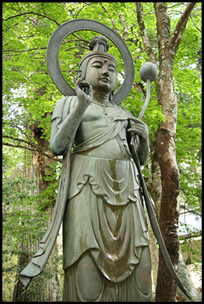 By PAT HARTMAN
By PAT HARTMAN
News Editor
Literary travel might be one of those concepts that means different things to different people. Many travelers go places to pay homage to their literary idols and draw inspiration from walking in their literal footsteps.
In the Irish Times, Prof. Noel Mulcahy talks about the effect on an Irish city of the memoir written by a recently deceased author:
Frank McCourt’s Angela’s Ashes provided a documented account of 1940s Limerick society, its behaviours and values. It spawned a new tourist product for the city. It offers a focus for literary research way past the foreseeable future.
Noel Mulcahy, incidentally, is a Professor of Industrial Strategy who holds management and technical training courses. He’s into stuff like the role of mathematics in engineering education.
Literary admiration also lures visitors to Madrid, to chase the ghost of the great travel writer Corpus Barga. At Wonders and Marvels, we learn from Shannon McKenna Schmidt and Joni Rendon that even Virginia Woolf was not immune to the fascination of literary travel. She made a pilgrimage to Haworth, home of the Bronte sisters, and wrote about it for The Guardian back in 1904. This present-day piece mentions some other world-class writers who traveled to partake of the atmosphere frequented by their own literary idols.
In Massachusetts, tourists are drawn to the homes of Henry Wadsworth Longfellow, Louisa May Alcott, James Russell Lowell, Ralph Waldo Emerson, Oliver Wendell Holmes, and (a guy with only two names, for a change) Rudyard Kipling. And that’s not even the whole list. Several other prominent writers, and painters too, frequented the North Shore area of that fine state, as explicated by Jim McAllister of The Salem News.
Speaking of Longfellow, tourists flock to Nova Scotia in French Canada, because Evangeline, an entirely fictional person and the heroine of his poem, lived there. In New Brunswick, there’s a hybrid theme park and historical reconstruction called Le Pays de la Sagouine, founded by novelist Antonine Maillet, who was so enthralled by her cultural heritage that she wrote 40 novels to commemorate the Acadian lifestyle.
Veteran journalist Stephen Mansfield mixed literature and travel in another way. As a youth, he slaked his appetite for foreign shores by becoming an English teacher (and rock musician) in Spain. There’s a great interview with Mansfield, conducted by Ulara Nakagawa, in The Japan Times.
Please suggest original conjunctions of place and literature!
Limerick photo courtesy of gabig 58, used under this Creative Commons license

 By PAT HARTMAN
By PAT HARTMAN